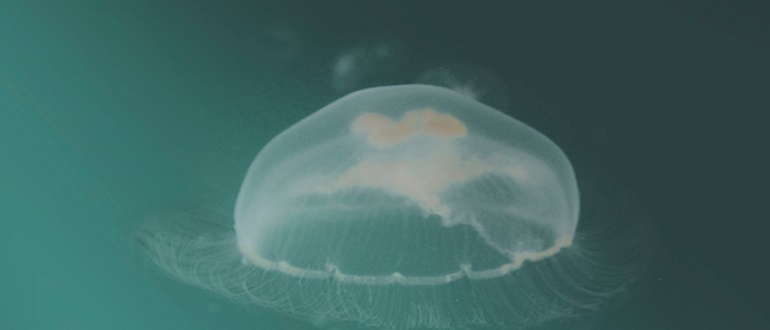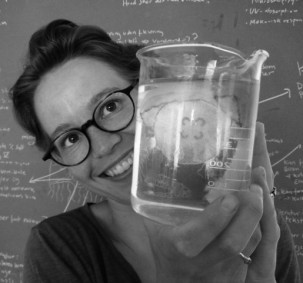
The hidden potential of jellyfish
The number of jellyfish in our oceans is growing rapidly, and they are threatening our fish populations. But the jellyfish can be made into delicious jellyfish crisps, and they might even be useful for removing microplastics from the ocean. Researcher Mie Thorborg Pedersen is on a mission to utilise jellyfish.
When is an animal a living creature? A jellyfish consists of 96 % water. It has no heart. No brain or lungs. And most people are more disgusted than compassionate if they accidently step in this gelatinous puddle on a summer day at the beach.
But despite its lack of brain activity and cute factor, it is the jellyfish that gastrophysicist Mie Thorborg Pedersen has thrown her love at.
- I want to understand the mysterious gelatinous structure of the jellyfish, PhD student Mie Thorborg Pedersen from SDU Biotechnology says.
33-year-old Mie Thorborg Pedersen is among the top 20 most talented PhD students who recently received a $30,000 EliteForsk travel grant from the Danish Ministry of Higher Education and Science.
Jellyfish in alcohol
The number of jellyfish in our oceans is on the rise. They are not just annoying for beachgoers but also for fishermen who find jellyfish instead of fish in their nets. But the growing number of jellyfish is also a threat to the fish themselves.
- Jellyfish eat fish eggs, so it would be beneficial if jellyfish were more attractive to fish. That way we could restore the balance between fish and jellyfish, Mie Thorborg Pedersen says.
One of Mie Thorborg Pedersen’s inventions is a jellyfish crisp. After studying theoretical models of how jellies behave, she soaked the jellyfish in alcohol. Two days later she had a delicacy on her hands.
- I am a gastrophysicist, and what I find fascinating is how you can transform a wobbly jellyfish into a crispy delicacy by using basic science, Mie Thorborg Pedersen says:
- I want to push the boundaries of what we consider delicious to eat. Expand our taste perspective so our food universe can include new types of food or new methods of preservation and cooking.
She points out that the Danish restaurant Noma has the same approach to gastronomy, and that the world-famous restaurant has shown great interest in her work with the jellyfish crisps.
She is also working with researchers from the international project “Go Jelly” on using jellyfish slime to remove microplastics from oceans.
- To understand how jellyfish slime can catch microplastics, it is essential to understand its physical and chemical qualities. That is exactly what I am trying to do from a gastronomical point of view. It would be amazing if we could use jellyfish slime to fight this big environmental issue, Mie Thorborg Pedersen says.
Meet the researcher

PhD student Mie Thorborg Pedersen has thrown her love at jellyfish. She has invented jellyfish chips, and she researches to understand the mysterious gelatinous structure of the jellyfish.